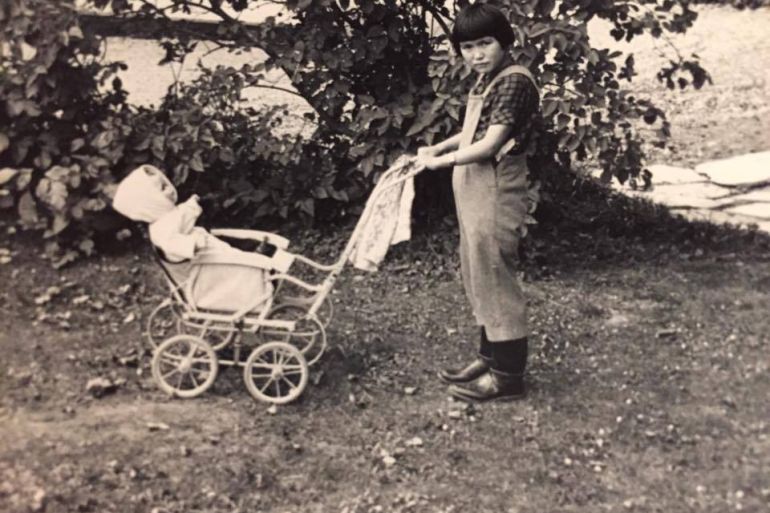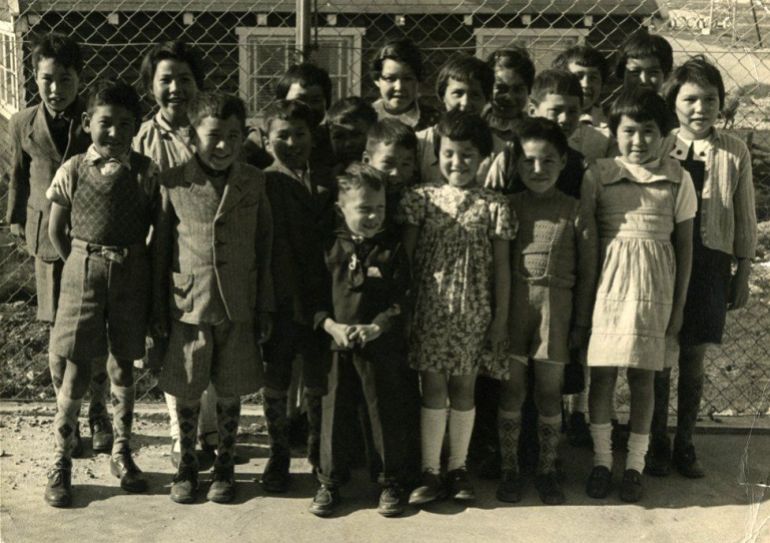Greenlanders shipped to Denmark as children seek compensation
Twenty-two Inuit children were sent to the former colonial power as part of a failed social experiment that left them traumatised.

In May 1951, 22 Indigenous Greenlandic children were put on a ship to Denmark, then the colonial power, as part of a social experiment aimed at modernising the Arctic island.
Greenlandic teachers and priests, at the request of Danish authorities, had identified the nine girls and 13 boys who should travel to be “re-educated” – to learn the language and way of life of the imperial ruler and return as role models for Denmark-Greenland relations.
Keep reading
list of 4 itemsLeft-wing party opposed to mining project wins Greenland vote
The Fight for Greenland: A new generation speaks
Denmark is still trying to send Syrians back
At first, many parents refused to let their children go. But they eventually relented, after officials insisted the trip would be full of opportunities.
In Denmark, they lived with foster families and were banned from speaking Greenlandic. When they returned, rather than being sent back to schools as promised, they were sent to an orphanage.
The experience should have lasted six months, but 16 children, aged four to nine and from underprivileged backgrounds, returned after more than a year.
The other six remained in Denmark; Save the Children, which had green-lit the project, had arranged for them to be adopted by their foster families.
The experience, ultimately a Danish attempt at “civilising” the Inuit population, led to trauma and affected the children’s relationships with their families for years to come.
Many victims have since died.
In 2020, Denmark made an official apology – a move activists and victims had long fought for.
The last six survivors, including 77-year-old Helene Thiesen, are now suing the Danish state.
Three months before the ship sailed, Thiesen’s father had died of tuberculosis, a disease that was common in Greenland, leaving her mother to care for three young children.
Thiesen was seven at the time.
Seventy years have passed since the experiment, but Thiesen, who now lives in Denmark, remembers it well.
She told Al Jazeera that she and other children cried themselves to sleep when they arrived at a camp in Denmark, where the Danish Queen visited.
Unknown to them, they were being quarantined there, with Danish authorities fearful they would spread disease.
Thiesen later found out that her mother had twice refused to give her up but eventually gave in to pressure when told that she would be gone for only six months and receive great possibilities for education in the future.
When Thiesen finally returned home, she saw her family at the harbour. Excited, she hurried to collect her luggage and leave the ship. She ran to her mother and raced to tell her the details of her experiences.
But her mother didn’t reply.
“She couldn’t understand me. I was speaking Danish, and she spoke Greenlandic,” Thiesen said. “That’s when someone poked me on my shoulder and told me to say goodbye to my mum and siblings. I thought I would go home with my family. But I was told to enter a red bus because I was going to an orphanage.”
Many of the children would never know the Greenlandic language again. About half went on to suffer from addiction.
The six survivors want $38,000 each in compensation from the Danish state.

Einar Lund Jensen, a former curator who researches Greenlandic and Arctic studies, was one of three historians who compiled a report about the case at the request of the Danish government, before its official apology last year.
Jensen said the experiment should be viewed in the context of a Danish wish to modernise the colony.
At that time, Denmark was working to make Greenland an integral part of the country. In 1953, Greenland went from being a colony to a county of Denmark.
Today, Greenland is a self-governing part of the kingdom.
“Of the 22 kids, six were adopted in Denmark,” Jensen said, adding he was surprised how badly the experiment was organised.
He found no evidence that suggests officials evaluated the trip.
“You would think that the project would be evaluated to see if it was worth continuing, but it just stops after one year. Perhaps they knew how bad it was – but there is nothing about why in writing,” Jensen said.
Denmark was behind the project, but the Greenlandic Provincial Council and Save the Children also approved the experiment which had tragic consequences.
In their report, the three historians concluded: “Alcoholism and addiction, mental illness, hospitalisations, and suicide attempts are repeated in about half of the stories from the children and their relatives.”
“Now only six are left,” said Jensen. The others “could have gotten an explanation and apology before they died.”
Mads K. Pramming, a lawyer for the victims, told Al Jazeera: “The state has already taken responsibility morally by apologising. Now they need to recognise what they did through compensation.”
He hopes that the government, led by Social Democrat Prime Minister Mette Frederiksen, will settle quickly.
“They are all healthy, but in their late 70s,” he said of the victims. “I would like for them to get the money while they’re still at an age to enjoy it.”
Astrid Krag, minister of social affairs, did not comment on the requests for compensation when asked by Al Jazeera, but wrote in an emailed statement that it was important the government had made an official apology.
“The [ministry] is in dialogue with the lawyer, representing the six people who were temporarily moved to Denmark in 1951,” she said.
Meanwhile, Thiesen and the other living victims are ageing. Her vision is deteriorating and even though she thinks the compensation amount is low, she hopes that the case will conclude soon, so the group can use the money.
“We have talked about going back to Nuuk [Greenland’s capital] together to visit the orphanage and see everything again,” she said.